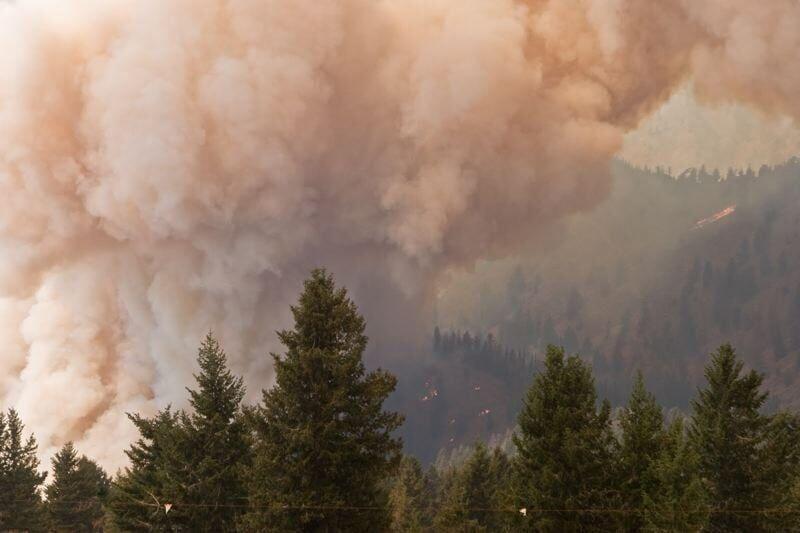
Editor’s note: This story first published in 2021. OPB has updated information and resources throughout.
Hot and smoky conditions are picking up in Oregon again as summer sets in.
Experts and emergency officials have long urged Oregonians to prepare for these extreme events as they become more common.
Here are a few tips to stay safe:
Where can I find up-to-date fire information?
The National Interagency Fire Center keeps a running tally of large wildfires in each state. That tells you how many fires are active, how many are contained and how many are new.
For more detail, the National Wildfire Coordinating Group’s incident information system, known as InciWeb, is a regularly updated map of fires across the West. Public information officers post updates on specific fires along with photos and video.
The Oregon Smoke Blog also posts periodic updates about potential smoke hazards from fires burning in and out of state.
What if I need to evacuate?
Evacuation orders during a wildfire are handled by your local law enforcement agency or sheriff’s office. There are three levels of evacuation orders:
- Level 1: Get ready. This level means you should prepare yourself to evacuate and closely monitor fire activity.
- Level 2: Get set. This level means you need to be ready to leave at a moment’s notice.
- Level 3: Go now. Leave the area immediately.
The state of Oregon recommends packing food and water, medicines, an emergency power source like batteries or wireless chargers, and important documents. The Federal Emergency Management Agency offers a longer list of items to pack in your go-bag in the case of evacuation.
People should be prepared to spend several days away from home at minimum.
How can I protect myself from wildfire smoke?
Whether a fire is at our doorstep or not, smoke has become a regular part of summers in the Northwest. It’s important for people to monitor air quality during fire season.
The Oregon Department of Environmental Quality provides an online map and mobile app called OregonAir that display the air quality index. Third-party apps like IQAir Air Visual or government apps like AirNow from the U.S. Environmental Protection Agency can also provide helpful information about air quality.
In the absence of internet access, people can also use a simple sight or smell test.
“If we can smell our air and if we can see the air, those are likely indicators that the air quality is not good and is very likely unhealthy,” said Carrie Nyssen, vice president of advocacy and air quality for the American Lung Association, in 2021.
Wildfire smoke is mostly made up of small particles that, if inhaled, can cause damage to our respiratory system. The effects of wildfire smoke are especially harmful to people with asthma or chronic respiratory or cardiovascular diseases, as well as older adults, children, pregnant people and smokers.
Public health agencies will often advise people to stay indoors if they can during periods of heavy smoke, but even then it’s important to take steps to keep indoor air clean.
“Air is air,” Nyssen said. “If we have our windows open or our doors are open, there’s nothing to stop the bad air from coming into our homes.”
People can keep their air cleaner by keeping doors and windows closed and making sure air conditioners, if they have them, are circulating indoor air with a clean filter. People should avoid burning candles, using gas stoves or vacuuming.
Air purifiers can also help clean indoor air, but supplies can run low during periods of high demand, so it’s a good idea to buy one before you need it.
For people who must be outside, it’s recommended you wear an N95 respirator approved by the National Institute of Occupational Safety and Health. The Oregon Occupational Safety and Health Administration offers guides on fitting masks in English and Spanish. Other masks — like surgical masks, bandannas or even dust masks commonly worn at the height of the COVID-19 pandemic — offer little to no protection from wildfire smoke.
Oregon also recently adopted rules to protect outdoor workers from hazardous conditions like heat and smoke.
Where can I go to find clean air or stay cool?
During periods of extreme heat or smoke, places like public libraries and community centers can offer respite from the conditions. The Oregon Department of Emergency Management also keeps a list of county and tribal emergency management agencies.
People can find more information about available cooling or clean-air centers by calling 211.
